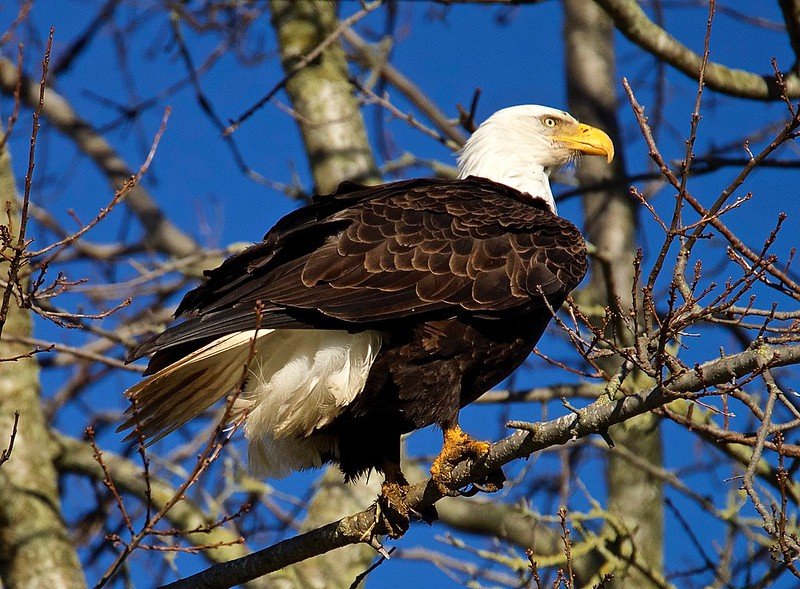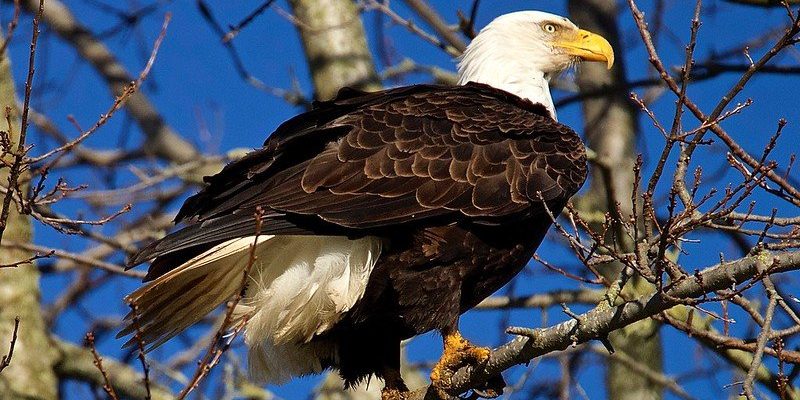
Let’s start by breaking down the bald eagle’s history. From its origins millions of years ago to its significant role in modern America, the bald eagle’s story is not just about biology; it’s filled with tales of survival, adaptation, and symbolism. Think of it like a long movie, filled with highs and lows, that brings us right to its starring role on the national stage today. So grab a coffee, and let’s dive into the evolution and history of the bald eagle!
The Origins of the Bald Eagle
The bald eagle, scientifically known as *Haliaeetus leucocephalus*, is a member of the Accipitridae family, which has been around for millions of years. Fossil evidence suggests that the ancestors of the bald eagle lived as long as 20 million years ago. These early birds were quite different from our modern-day eagles, likely hunting smaller prey and living in diverse habitats.
You might be wondering, what did these ancient eagles look like? Well, they were similar in structure to today’s eagles, with strong talons and sharp beaks, but their plumage was probably less striking. Over time, through a process called evolution, the bald eagle adapted to its environment. Its impressive wingspan of up to 7 feet, strong legs, and keen eyesight helped it thrive across North America, from the subarctic regions to the temperate zones.
The bald eagle’s *distinctive white head and tail* feathers didn’t appear until they were about five years old. This gradual change is like earning your stripes! As they reach adulthood, these visual traits not only make them stunning but also help them attract mates and establish their territory.
The Bald Eagle and Native American Culture
The bald eagle holds a special place in Native American culture. Many tribes consider it a sacred bird, representing strength, courage, and wisdom. Imagine a time when the skies were filled with these magnificent birds, soaring high and inspiring awe in those who watched. Native Americans often used feathers in their rituals, believing they carried the spirit of the eagle.
Different tribes integrated bald eagles into their mythology. For instance, the Lakota people held the eagle in high regard, believing it was a messenger between humans and the creator. They would wear eagle feathers in ceremonies to symbolize connection and reverence. This relationship with the bald eagle illustrates how deeply intertwined nature is with cultural beliefs.
Moreover, the bald eagle’s symbolism goes beyond just respect. It embodies freedom and bravery, ideals that would later resonate with the founding principles of the United States.
The Bald Eagle as a National Symbol
In 1782, the bald eagle officially became the national emblem of the United States. This was a bold choice, considering there were many other animals to choose from. But the bald eagle, with its majestic presence and strong spirit, perfectly encapsulated the country’s aspirations. It was a symbol of freedom, resilience, and independence during a time when the nation was still defining its identity.
The choice of the bald eagle was not without controversy. Some Founding Fathers favored other symbols, like the turkey. Benjamin Franklin famously joked, “The turkey is a much more respectable bird.” However, the bald eagle won the day, and its image appeared on the Great Seal of the United States.
Fast forward to today, the bald eagle’s representation extends beyond just the seal. It appears on flags, coins, and various emblems, a constant reminder of American ideals and values. It’s hard to think of the United States without picturing this incredible bird, isn’t it?
Conservation Efforts and Recovery
Despite its strong symbolism, the bald eagle faced serious threats throughout the 20th century. Habitat loss, pollution, and the use of the pesticide DDT caused drastic declines in their populations. At one point, it was nearly extinct. You might find it shocking that such a powerful bird could be reduced to a vulnerable state.
However, conservation efforts began to turn the tide. Thanks to protective laws like the Bald and Golden Eagle Protection Act in 1940, and the banning of DDT in the 1970s, the eagle population started to recover. Organizations dedicated to wildlife preservation played a crucial role in raising awareness and protecting the natural habitats that bald eagles rely on.
By 2007, the bald eagle was removed from the endangered species list—a true success story of conservation. Nowadays, with an estimated population of around 300,000, you can find bald eagles across North America, often perched majestically near lakes and rivers.
Interesting Facts About Bald Eagles
So, what makes bald eagles so fascinating? Let’s explore some interesting facts that might surprise you!
- Diet: Bald eagles are primarily fish-eaters, but they’re opportunistic hunters. They also consume small mammals, birds, and carrion. Imagine them swooping down from the sky, snatching a fish right out of the water!
- Nest Building: Bald eagles create massive nests, often the largest of any bird species. They can weigh over a ton and be reused for years, growing larger each season.
- Vocalizations: You might think the bald eagle has a mighty roar, but their call is actually a series of high-pitched whistling sounds. It’s not quite as dramatic as you might expect!
- Longevity: In the wild, bald eagles can live up to 20 years, and in captivity, they can live even longer. That’s quite a lifespan for a bird!
These facts highlight just how unique and remarkable bald eagles are. Their adaptability and resilience reinforce why they are such an important part of our natural landscape.
The Future of the Bald Eagle
Looking ahead, the future of the bald eagle seems bright, thanks to ongoing conservation efforts. However, challenges still exist. Climate change, habitat destruction, and human encroachment continue to pose threats to their survival. It’s crucial that we remain vigilant and support measures that protect these majestic birds and their habitats.
You might have heard of local programs that promote wildlife conservation or organizations working tirelessly to ensure the bald eagle thrives. Every small action counts! Supporting these initiatives helps maintain the balance of nature and preserves the legacy of the bald eagle.
By teaching future generations about the importance of this symbol, we can foster a deeper appreciation for wildlife and the natural world. Just as the bald eagle has soared through history, so too can we strive to protect its future.
The evolution and history of the bald eagle are more than just a narrative about a bird; they reflect the spirit of a nation and the resilience of nature. From its ancient origins to its revered status today, the bald eagle has adapted, symbolized, and inspired countless individuals.
As we continue to celebrate this magnificent bird, let’s also commit to protecting its habitat and ensuring its survival for future generations. After all, the bald eagle isn’t just a symbol of freedom; it’s a testament to what we can achieve when we work together to safeguard our natural world.

